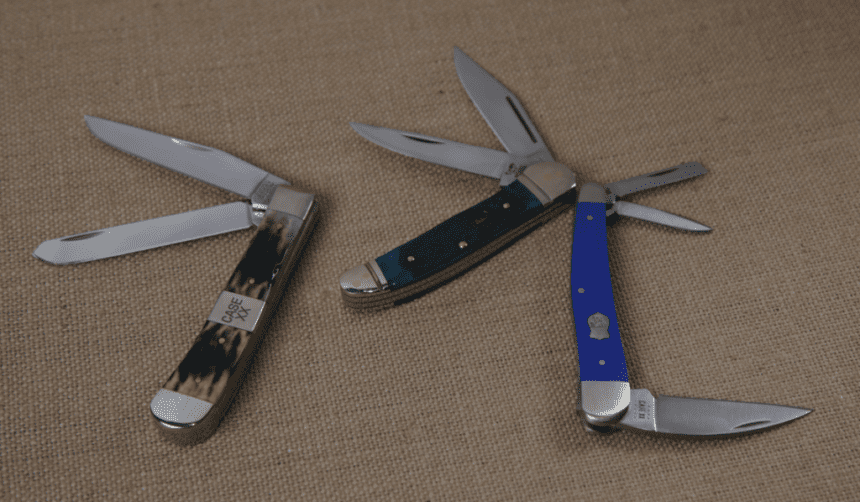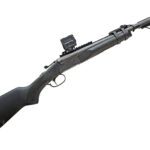Traditional Knives – A Comprehensive Guide
Traditional knives are among the most sought-after, captivating, and historically significant knives available, each representing a class of its own. To discuss traditional knives is akin to delving into a distinct language. In this article, we will walk you through how to identify a traditional knife, what attributes contribute to a good one, and why you might find one suitable for your needs!
## What Constitutes a Traditional Knife?

Defining a traditional knife can be approached in two ways, both of which hold their relevance. The first interpretation aligns closely with the strict definition of “tradition,” stating that a “traditional knife” is one that conforms to customary practices. By this definition, knives such as the Finnish Puukko, the Japanese Kiridashi, and the Alaskan Ulu fall under the category of “traditional knives.”
The second approach, which is commonly implied when referencing “traditional knives,” pertains to knives manufactured during the era of Western expansion and industrialization in the Americas, from the mid-19th to the mid-20th centuries. This period marked the advent of mass production of knives, flooding the Western world with high-quality, pocket-sized cutlery. Despite significant technological advancements in the knife industry in recent times, these early production knives, known as “traditional knives,” continue to enjoy enduring popularity. Brands like Case, Boker, and Buck continue to champion traditional knives, showing no signs of slowing down.
Traditional knives are available in various forms, with certain designs gaining more traction than others. These established designs, referred to as “patterns,” are embraced by nearly every company within the traditional knife niche. We’ll delve deeper into these patterns shortly, as they continue to inspire modern knife designs. Today, one can own a Trapper that resembles the one their grandfather carried, enhanced with a Bohler M390 blade, a ball bearing pivot, a titanium frame lock, and an Arctic Storm Carbon Fiber handle. Such knives are termed “modern traditionals,” and they exude a distinct appeal.
In essence, a traditional knife strives to blend in rather than stand out. To encapsulate it in a single sentence, “traditional knives” encompass knives crafted using materials, mechanisms, and designs popularized in America between the mid-19th and mid-20th centuries.
## Identifying a Traditional Knife

Traditional knives exhibit a varied array of forms, yet several shared characteristics are worth noting. It’s important to bear in mind that no single feature singularly defines a traditional knife.
Firstly, the mechanism plays a pivotal role. The Slip Joint mechanism hinges on a spring along the knife’s spine to secure the blade in the open, closed, and occasionally mid-position (referred to as a half-stop). It’s not classified as a lock because the blade is not securely locked in an open or closed position. To close the knife, gentle pressure on the spine is sufficient to retract the blade. While traditional knives employ diverse mechanisms, the slip joint predominates, with lockbacks also featuring prominently. In the present day, more sophisticated mechanisms, locks, and constructions have become the norm. Slip joint knives are crafted for two primary reasons: either as a nod to traditional knives or to conform to legal regulations in more locales. One can often discern the knife’s intended purpose through its design.
The design itself serves as another distinguishing feature of a traditional knife. Traditional knife designs embody simplicity, cleanliness, and utility. They eschew exotic, intricate, or passing trends. Craftsmen within the traditional knife sphere prioritize top-notch workmanship and rare materials over divergent designs. Traditional knives, in essence, represent a throwback to a specific period, with a strong emphasis on harmonizing with the era rather than standing out.
Traditional knives predominantly employ old-school hardware and materials, such as pins instead of screws, spacers instead of standoffs, and brass liners instead of steel. Most traditional knife handles incorporate natural materials like wood, bone, and antler, often complemented by brass or silver bolsters. Blades are typically fashioned from simple carbon or stainless steels, occasionally featuring Damascus steel on special occasions. While TORX hardware, powder steels, and advanced laminates occasionally pervade modern-traditional hybrids, they predominantly remain intertwined with 21st-century knife craftsmanship. Traditional knives exude a timeless charm, adhering staunchly to old-school materials and construction.
## Prominent Traditional Knife Patterns
Understanding the traditional knife canon can enrich one’s comprehension of the modern knife landscape, regardless of whether they intend to carry a traditional knife. Many traditional knife patterns have made a lasting impression on the industry, with their influence palpable even a century later. Below, we’ll unravel some of the most influential and enduring traditional knife patterns that have significantly shaped the industry. Though this compilation is non-exhaustive, it serves as an excellent point of embarkation.
### Trapper

Although originally crafted for trappers navigating the untamed American West in pursuit of beavers, the Trapper pattern exhibits features that have brought joy to tens of millions of Americans then and continue to do so in contemporary times. Sporting a straightforward handle design that affords users a range of grips and two blades – a clip point blade for general use and a spay blade for skinning and other precise cuts – this pattern packs considerable utility within a pocket-friendly frame. Modern knives often derive inspiration from its iconic design, underscoring its enduring historical significance.
### Stockman

Tailored for cowboys, ranchers, and assorted livestock professionals, the Stockman pattern incorporates three blades. Its primary clip point blade addresses general-purpose usage, while the sheepsfoot blade excels at handling tougher tasks, and the spay blade is ideal for livestock maintenance, particularly the conversion of uncastrated male cattle to steers. The Stockman’s versatility makes it a handy tool for ranch hands, well-suited for enduring daily, rigorous usage. Notably, the demands entailed in livestock management often necessitate prompt and efficient action, making the Stockman pattern an indispensable asset.
### Barlow

Not everyone embarks on daring outdoor expeditions or is involved in animal husbandry, yet everyone requires a reliable knife. The Barlow pattern duly fulfills this need, offering a compact, pocketable knife sporting a minimalist design. Boasting a symmetrical handle with a lengthy bolster and a single blade, typically a clip point, the Barlow caters to a diverse array of users, including lawyers, educators, accountants, and other professionals whose duties do not warrant larger, heavy-duty knives. While its cutting prowess is adequate for tasks such as opening packages, preparing quills, sharpening pencils, and slicing steak, it intentionally deflects more demanding tasks to specialized tools. Presently, individuals seeking a knife for everyday use, without the need for labor-intensive cutting, gravitate towards the Barlow for its timeless elegance and ease of carry.
### Swayback

Often hailed as one of the finest gentleman’s knives ever created, the Swayback earns this status owing to its seamless integration into the refined lifestyle associated with the gentleman archetype. Characterized by its diminutive proportions and non-threatening demeanor, the Swayback is imbued with an air of sophistication. The knife derives its nomenclature from the backwards “sway” or curvature present at a natural inclination for the user to hold it with the edge oriented towards their position. This design facilitates tasks such as food preparation, cigar cutting, and champagne foil removal. Given its compact dimensions, the Swayback discreetly blends into the pockets of slacks or formal attire, rendering it an ideal companion in boardrooms and formal settings.
### Folding Hunter

While every hunter may fervently wish to transport an entire armory for processing game in the field, practicality often necessitates a more efficient solution. The Folding Hunter, true to its name, deftly balances the need for a functional hunting knife with the constraints of portability. Traditionally featuring a slip joint with a clip point blade and a skinner blade, the conventional rendition of the Folding Hunter underwent a significant transformation in 1963. This pivotal juncture marked the release of the single-bladed Buck 110 Folding Hunter, distinguished by its robust lockback mechanism. This innovation bolstered the Folding Hunter’s position as one of the most sought-after traditional knives, a sentiment that prevails to this day.
### Toothpick

The Toothpick, alternatively known as the Texas Toothpick, boasts a slender profile and traces its origins to the Deep South, evolving from the French Laguiole knife. While the Laguiole design remains relevant and is predominantly employed as a folding steak knife, the Toothpick distinguishes itself by earning a pivotal role in a panoply of mundane yet essential tasks. Its slender dimensions render it exceptional for delicate functions such as extracting splinters, deboning fish, and even the quintessential task of tooth picking. A testament to its versatility, the Toothpick’s embrace of numerous everyday applications has solidified its standing within the traditional knife canon.
### Whittler

The art of whittling, an endeavor that necessitates painstaking wood carving, often necessitates a diverse assortment of blades. In response to this need, professional artisans might wield an armory of knives to undertake these endeavors. However, the Whittler offers a more streamlined alternative, consolidating multiple blades within a singular pivot. Comprising a Wharncliffe blade, ideal for the majority of cutting duties, and flanked by a small coping blade capable of rendering precise details, the Whittler serves as an ideal pocket knife for campers. It melds portability with unencumbered functionality, rendering it a ubiquitous and dependable companion for an array of tasks, ranging from whittling sticks to intricate artistic pursuits.
## Traditional Blade Styles
Traditional pocket knives are equipped with an assortment of specialized blades, each tailored to a distinct purpose. Below, we highlight the most prevalent blade styles integral to traditional knives:
– Clip Point – Suited for general cutting tasks, featuring a pointed tip for piercing and a slight curvature for slicing.
– Drop Point – Ideal for general cutting applications, distinguished by a pronounced curvature at the tip, rendering it optimal for slicing and hunting purposes.
– Spear Point – Versatile and ideal for general use, though not particularly adept at piercing. Commonly found on Swiss Army Knives.
– Sheepsfoot – Tailored for rigorous cutting, characterized by a straight edge and a rounded-off spine at the tip, rendering piercing virtually unattainable.
– Wharncliffe – Designed for wood carving, featuring a straight edge culminating in a needle-like point. Commonly incorporated into whittling knives.
– Pen – A diminutive, slender spear-point blade conducive to preparing quills. Typically found on smaller, gentleman-style knives.
– Spay – Boasting a straight edge and a sharp curvature near the tip, rendering it ideal for skinning, spaying, or neutering tasks. Commonly featured on Trapper and Stockman patterns.
– Coping – Featuring a straight edge, a flat spine, and an abrupt, squared-off tip, ideal for fine woodworking. Commonly found on whittling knives.
## Leading Names in Traditional Knives

The realm of traditional knives has been graced by several legendary figures, with many of them enshrined in the Cutlery Hall of Fame. Each luminary has left an indelible mark on the industry, with a history too immense to be encapsulated within the confines of this article. We encourage further exploration of the contributions made by each figure, providing invaluable insight into the multifaceted landscape of traditional knives. Notable figures in this domain include:
– Henry Baer – Inaugural president of Schrade knives, and the eponymous figure in the creation of the Uncle Henry line.
– Al Buck – Orchestrated the ascendance of Buck Knives, alongside his father Hoyt, and was the visionary behind the iconic 110 Folding Hunter.
– Tony Bose – A distinguished custom traditional knifemaker, credited with designing the iconic Lanny pattern, which has since become a timeless emblem within the industry.
– Bill Ruple – A celebrated custom traditional knifemaker, renowned for mentoring several leading contemporary traditional craftsmen.
– Michael Walker – Embarked on his journey with traditional knives, subsequently pioneering the Liner Lock, a mechanism that has found widespread adoption among modern traditionals and other contemporary knives.
– William Russel Case – Helped establish Case Knives with his sons, a lineage that has been a source of inspiration for many contemporary knife companies.
– Hermann and Robert Boker – Elevated Boker from a modest German family operation to an illustrious enterprise specializing in knifemaking.
– Jared Oeser – A preeminent custom knifemaker specializing in high-end traditional knives, with his creations often commanding prices in the thousands.
– Enrique Pena – A prominent figure in the design of modern traditional knives, notable for his innovative contributions to the craft.
– Joseph Opinel – Endowed the world with the Opinel knife, complete with a revolutionary ring lock, favorably favored by luminaries such as Pablo Picasso.
– Karl Elsener I – Formulated Victorinox, the illustrious manufacturer of the iconic Swiss Army Knife. Presently, leadership has been assumed by Carl Elsener IV, steering the company into the future.
## The Case for Carrying a Traditional Knife

### Legality
The decision to carry a traditional pocket knife is informed by numerous compelling factors, chief among them being legality. The passage of the infamous Federal Switchblade Act in 1958 underscored a governmental endeavor to avoid imposing restrictions on the knives that were ubiquitously wielded by legislators at the time, namely traditional folders. While personal opinions may vary concerning the law, it is vital to adhere to its provisions. For law-abiding citizens, the utility offered by a traditional pocket knife remains unmatched, with the added assurance that, when wielded conscientiously and within lawful parameters, a traditional knife will mitigate legal scrutiny.
### Style
Traditional knives epitomize a timeless style that transcends the confines of contemporary fashion. Versatile in their appearance, these knives seamlessly integrate into a broad spectrum of stylistic sensibilities, rendering them equally at home in everyday attire as they are in formal dress. This adaptability enhances the likelihood of carrying the knife consistently, reducing the risk of misplacement. Embracing a traditional knife as a stylistic accessory instills a sense of continuity and refinement that resounds with aficionados across generations.
### Durability
A tour of the Buck Knives factory underscores the steadfast and efficient production of traditional folders, culminating in a profound realization of their exceptional durability. The sheer volume of knives manufactured daily, juxtaposed against the diminutive warranty department staffed by a mere three individuals, serves as a testament to the unparalleled resilience of traditional knives. Intrinsic to their enduring appeal is the absence of vulnerable and detachable components, the robustness of traditional materials, and the enduring legacy of their proven designs. This resilience is exemplified by the enduring legacy of a 90-year-old, who remains faithfully accompanied by a Queen Cutlery pocket knife gifted to him at the tender age of eight.
### Sentiment
The endearing legacy of traditional pocket knives transcends their material value, inherently making them exquisite heirlooms. Witnessing the venerable Queen Cutlery pocket knife, tenderly preserved and wielded throughout the vicissitudes of a lifetime fraught with myriad experiences, resonates with the profound sentimentality embedded within traditional knives. Such knives are poised to transcend generations, serving as cherished family legacies capable of enduring the test of time.
### Versatility
The hallmark distinction of traditional folders lies in their ability to accommodate multiple blades, entailing a pantheon of possibilities. Empowered by a diverse array of blades, traditional knives impart an unprecedented array of options, rendering them indispensable in diverse scenarios. When one blade is rendered dull through consistent use, the dexterity to seamlessly transition to an alternate razor-sharp blade epitomizes the versatility that characterizes the quintessence of traditional knives.
## Rethinking the Traditional Knife

While traditional knives evince a timeless allure, they nonetheless harbor certain trade-offs that are integral to consider. The following factors merit reflection when contemplating the adoption of traditional folders:
### Dated Design
Traditional knives are imbued with the constraints of bygone technological eras, resulting in a formative absence of contemporaneous materials, mechanisms, and small parts constructions. Concurrently, the emergence of modern traditionals endeavors to amalgamate legacy designs with contemporary materials and mechanisms, imbuing them with a heightened sense of opulence. The debate surrounding the merits of embracing traditional designs and materials in light of modern innovations is ongoing, with proponents of modern traditionals emphasizing its fusion of antiquity with luxury. Concomitantly, proponents of modern traditional knives underscore the necessity for modern materials to be harmonized with current design paradigms. Notably, both inclinations mutually respect each other and periodically engage in collaborative ventures.
### Safety
The non-locking attribute characteristic of traditional folding knives, particularly prevalent in slip joints, warrants measured contemplation. While overt pressure is requisite to close the knife, the process of opening and closing these knives necessitates caution. The continual pressure exerted by the slip joint on the blade during operation increases the proclivity for inadvertent injury. Recognizing the modest room for error, individuals utilizing modern folders are reassured by the enhanced safety mechanisms afforded by contemporary lockback mechanisms. This facet underscores the need for continual circumspection when operating traditional knives.
### Style
The inherently antiquated appeal embodied by traditional folders may not universally resonate with all enthusiasts. In instances where stylistic modernity prevails, the sartorial sensibilities of certain individuals may diverge from the prevailing proclivity for traditional knives. It bears testament to the kaleidoscopic panorama of the modern knife landscape, exemplifying a sweeping array of knives that echo contemporary predilections, encompassing varied aspects such as demeanor and aesthetic.
## Preserving a Storied Tradition

While traditional knives may not assume preeminence in favor of prevailing









